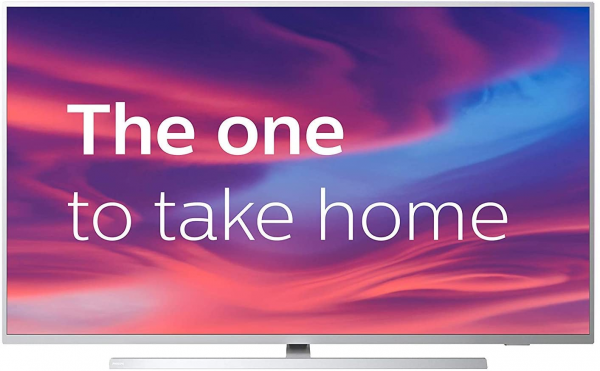Philips
Philips 58PUS7304: does The One really offer very good value for money?
Aprox. 699€
See specificationsThe Philips 58PUS7304 television, also called The One, is said to offer a very good quality / price ratio by combining a VA LCD panel with a high-end video processor. Let's see if he keeps his promises ...
Positive points
Good image quality in SDR.
Scaling of the Philips P5 video processor for common content (TNT, YouTube, etc.).
Display delay.
Fluid and versatile Android TV.
The Ambilight still as original.
Bad points
Disappointing compensation engine.
Reduced viewing angles.
HDR without any interest.
Our review
Presentation
Designed to promote its quality / price ratio, the Philips 58PUS7304 television - also known as The One, in reference to the one and only television that you need according to Philips - has a VA LCD panel associated with a Philips video processing processor P5 that is usually found on more expensive models, such as the beg Oled TVs. This television also retains the Ambilight ambient lighting system which makes the originality of the brand as well as the Android TV system offering many possibilities. On the other hand, it is content with a Direct LED backlight system, without the localized lighting of a Full-LED system.
Launched at more than € 1,000, the Philips 58PUS7304 is currently sold for less than € 800. This model is also available in 43, 50, 55, 65 and 75 inch versions, but not all are equipped with a VA type LCD panel. According to our information, only the 50PUS7304 (50 inches) and 58PUS7304 models carry a VA panel. The other models have an IPS panel offering better viewing angles, but a shrinking native contrast (usually around 1000: 1, which results in grayish blacks in the image).
All the brightness and colorimetric measurements mentioned in this article were carried out with a SpectraCal C6-HDR probe and the CalMAN Ultimate software.

Image quality
The VA type LCD panel provides very good native contrast, at the expense of more limited viewing angles than those of the IPS or Oled models. We measured a loss of brightness of 62.5% at 45 ° on the sides against 70% usually for televisions in this price range. It's a little better, but the variations remain largely visible.
Movie mode displays the best rendering. In this mode, we measured an average delta E at 2.8, a value less than 3, a threshold below which the human eye can no longer detect the differences between the colors displayed and the colors expected. The colors can therefore be considered fair, with the exception of blue, the delta E of which exceeds 6.
We measured the gamma mean at 2.21, a value a little far from the reference value (2.4), but the curve is very stable across the spectrum. The rendering of the levels is therefore generally good.
The average color temperature is measured at 7,000 K across the entire spectrum, a value not too far from the 6,500 K reference video. Above all, the curve is stable over the entire spectrum.
We measured the native contrast at 3,270: 1, a very good value, especially since the TV does not use a dynamic backlight system to obtain this rate, which Samsung or TCL do. The brightness does not vary depending on the nature of the image, in particular to avoid images that are too dark in dark scenes. This contrast ratio allows you to enjoy sufficiently deep blacks.
The Perfect Picture Engine scaling engine built into the Philips P5 processor works wonders. If cinema enthusiasts go their way, aficionados of image enhancements will be won over by the performance of this treatment, which transforms an image from an HD or Full HD source into an Ultra HD image with a stunning level of detail. This is particularly useful on YouTube and TNT, for example. In Film mode, this processing is disabled for much smoother scaling, thus avoiding artifacts. However, we were disappointed by the performance of the motion compensation engine which is clearly not at the level of what Philips offers on its Oled TVs and which is a benchmark in the field. Here, the compensation engine has no impact on the sharpness of moving images. It must be said that the 50 Hz panel does not allow the backlight scanning system to be used.
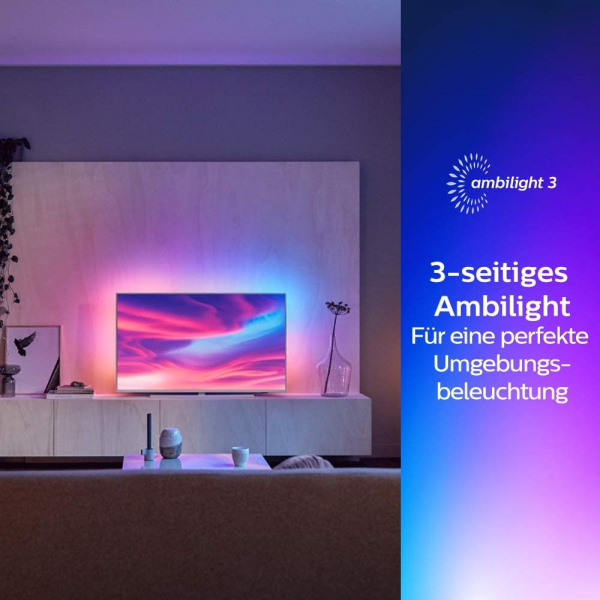
HDR
The Philips 58PUS7304 The One is one of the rare models compatible with all HDR standards on the market, namely HDR10, HLG, as well as formats including dynamic metadata such as Dolby Vision and HDR10 +, which are particularly suitable for LCD TVs. mid-range.
With a maximum HDR signal of 10,000 cd / m², the Display Tone Mapping used by Philips smoothes the signal to make the most of the TV's capabilities and avoid clipping (saturation). On the other hand, the displayed brightness is systematically below that requested. For example, when the signal requests a brightness of 250 cd / m², the television is content with 100 cd / m². In the end, if the television avoids clipping, the image is systematically too dark.
On this model, we measured a brightness peak of 315 cd / m², a value too limited to benefit from an HDR image worthy of the name. It does not display this famous dynamic which brings realism to the image. In comparison, the best LCD TVs like the Samsung QE65Q85R or the Sony KD-75XG9505 exceed 1,000 cd / m² and some TVs even reach 2,000 cd / m², like the Sony KD-65ZF9 or the Samsung QE75Q900R.
HDR Film mode provides the best color rendering. We have measured an average delta E of 5.5, well above the threshold of 3. The colors cannot therefore be considered as faithful to those sent by the source in HDR.
The coverage of Rec. 2020 is not enough to take full advantage of this color space, but remember that even high-end televisions do not exceed 70 to 75% of this very demanding color space.
The coverage of the DCI-P3 is not much more satisfactory with the display of only 66% of the colors of this space. In practice, the DCI-P3 is more important than Rec. 2020 since it is the color space used by the cinema industry. This TV therefore does not allow you to fully enjoy Ultra HD HDR content.
Overall, the Philips 58PUS7304 does not provide a good HDR image, but it is a problem common to all entry-level and mid-range TVs whose brightness is not sufficient to display a beautiful image dynamics.
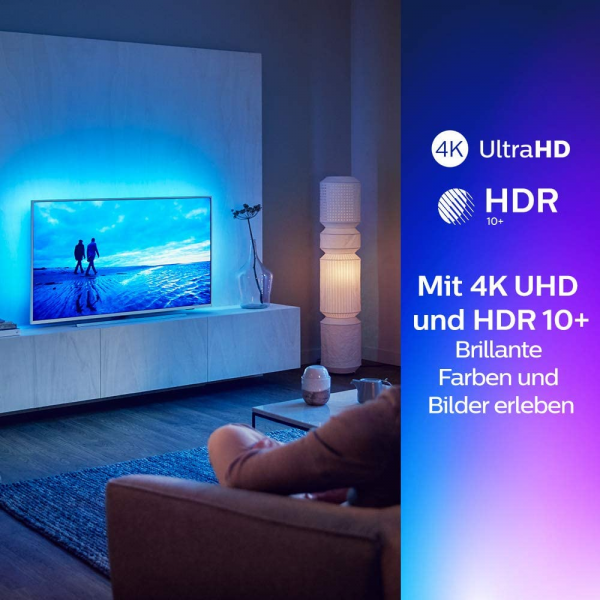
Video games
We measured the remanence time at 17.5 ms, a very average value and quite far from the results of the best LCD on the market that are the Samsung QE65Q85R and Sony KD-75XG9505 which go down to 11 ms. In the image, we can therefore observe a slight blur behind the moving objects. The good surprise comes from the delay in the display measured at only 20 ms; a first for Philips, even high-end Oled televisions with a display delay of more than 30 ms. The TV thus displays a little more than one image of delay per second on the source. There is almost no lag between an action on the joystick and its impact on the screen. However, competitors will turn to slightly more responsive models, including the Q85R or even some Oled TVs like the LG 55C9 or the Panasonic 55GZ1000.
As always, rendering the Game mode requires some manual adjustments to regain some fidelity. We deactivated all the improvements in contrast and then set the temperature to Warm in order to benefit from a Delta E of 7.7, far from the threshold of 3, but already less eccentric than the delta E greater than 10 obtained with regattas by default.
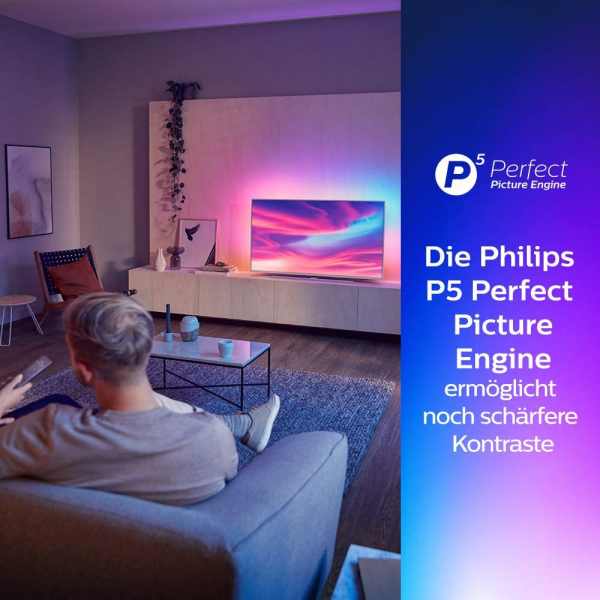
Clouding
The use of a Direct LED backlight system limits the risks of clouding, but this defect can still appear if the light distribution filter is damaged during transport. We didn't see any clouding issues on the model we tested or light leaks in the corners.
We have measured the average difference in white homogeneity over the entire slab at only 9%; an excellent figure for a 58-inch LCD model. Remember that below 20% the eye does not perceive differences in uniformity.
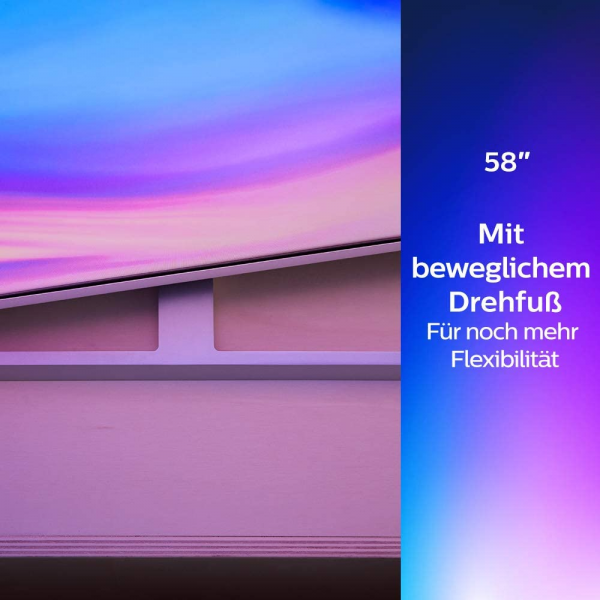
Ergonomics
The Philips 58PUS7304 sports a sober and unadorned design. Its main originality lies in the central rotating foot ± 30 °. This feature has almost disappeared from the market and is very rare on high-end televisions. Recently, we still tested two models with a rotating central stand, the Edenwood ED55D00UHDOLED and the Philips 55OLED854.
The edges of the screens are not particularly thin, but the finishes are very good for a television in this price range.
This mid-range TV has a fairly basic treatment against glare which is not really effective. It does not equal the one found on Oled TVs and even less that of high-end TVs from Samsung, like the 65Q85R, which remain the benchmark in the field.
This 58 inch TV is comfortable on our benchmark TV stand which measures 160 x 40 cm. The TV alone is 11.5 cm thick, the dimensions on the TV stand are always linked to that of the legs, which are limited here to a depth of 24 cm. Note that the width of the foot on the front is 74 cm, so it is necessary to provide a piece of furniture of at least this size to correctly place the TV.
The rear is classic. We find the power supply on the left and the connectors on the right. Philips is satisfied with a rilsan collar to fix the cables. It's better than nothing, but it shows a little compared to the finishes of the TV.
The connections are distributed in two places. On the side, there are two HDMI 2.0a inputs (Ultra HD 60 fps, HDR, HDCP2.2), two USB ports including a USB 3.0, a PCMCIA port (CI + common interface) and a headphone output. On the back, two additional HDMI inputs, optical digital audio output, Ethernet port, component input (via a supplied adapter) and rake and satellite antenna connectors. The TV has a DVB-T / T2 / T2-HD, DVB-S / S2 and DVB-C tuner. It also has 802.11a / b / g / n / ac Wi-Fi, as well as Bluetooth 4.2 for connection with a wireless audio device (headphones or speaker).
Exclusive to Philips televisions, the Ambilight system projects the colors of the image on the screen onto the rear wall, but not only. Over the years, Philips has improved it by adding many modes offering to exploit it differently. The ambient light can thus vary depending on the sound (useful when the image is fixed, with Deezer or Spotify, for example). The Ambilight can also be integrated into a Philips Hue environment - Philips connected bulbs - to contribute to the ambiance of the room. It is also possible to choose personalized moods that have nothing to do with the content (red, green, blue or white) or even display the flag of your favorite team during a Euro 2020 match, for example example.
This Philips TV has Android TV in its latest version (9). This system takes up the new interface launched by Android 8. It is a little less intuitive at first, but more effective thereafter. The lines directly display the content of the most used applications (Netflix, YouTube, Molotov TV, myCanal, SFR Sport, etc.). The Android TV system is one of the most complete on the market and especially the one with the most applications, but not all of them are optimized for use on a television. In addition, the integrated Chromecast allows you to receive and display a video stream sent from a smartphone, tablet or computer. The MediaTek MT5887 processor and its 2 GB of RAM ensure good responsiveness to the entire system. We will always avoid greedy software, especially games, but this processor is powerful enough to properly manage video applications and offer relatively smooth transitions.
As with all Android TVs, the first boot takes longer. It takes about 38 seconds here, it's a little better than the 45 seconds usually found on Android TVs, but it remains very long. Fortunately, the TV comes out of standby in 6 seconds, while consuming less than one watt in standby. In any case, it is much longer than Tizen systems from Samsung or WebOS from LG, which start up in less than 5 seconds. Finally, as often, the standby is instantaneous.
This television is supplied with a single very complete remote control which allows access to all the functionalities. It is a little lighter than the remote control with keyboard found on some high-end televisions of the brand. Overall, the remote control works pretty well. It incorporates a microphone that makes it possible to interact with Google Assistant and make it easier to search on YouTube or Netflix, for example. The buttons are not backlit except for the Ambilight button.
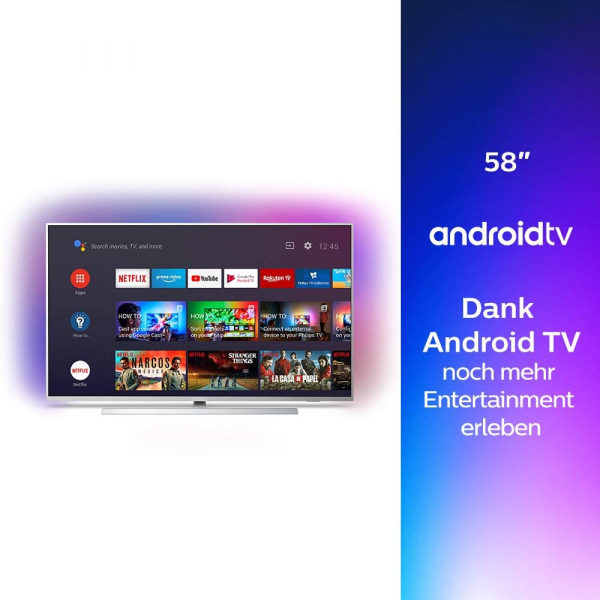
Audio
The Philips 58PUS7304 television has a simplified audio section consisting of two 10-watt speakers. Oled TVs from the brand often have an additional woofer. The audio rendering is in the good average. It's far from incredible, but the sound is clear enough with the presence of low mids, but there is clearly a lack of bass. The treble is also a little less present, but a 5-band equalizer in the options allows to correct this small defect manually.
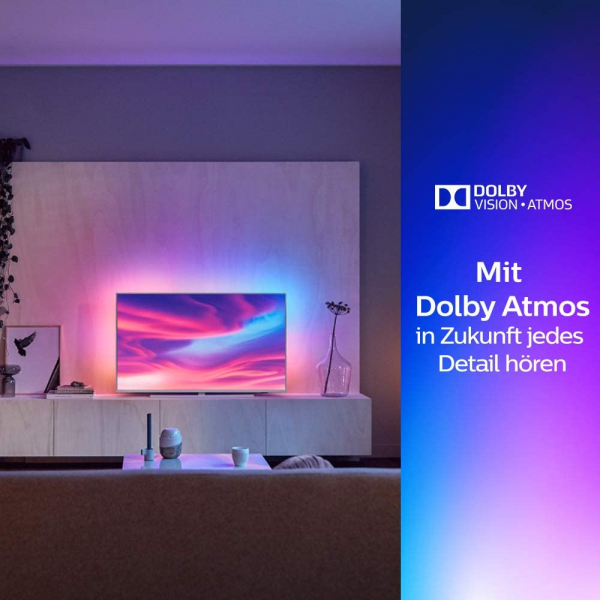
Consumption
We measured the consumption of the Philips 58PUS7304 at 79 W on our target with a white set at 150 cd / m², which translates into a very correct relative consumption of 85 W / m². This value is much lower than the average of the TVs tested (around 100 W / m²), but this TV does not do any better than the Sony KD-65XG8505, record-holder of the category with its 56 W / m², or the Samsung QE55Q6F 2018 and its 61 W / m². Standby consumption is always less than 1 W.
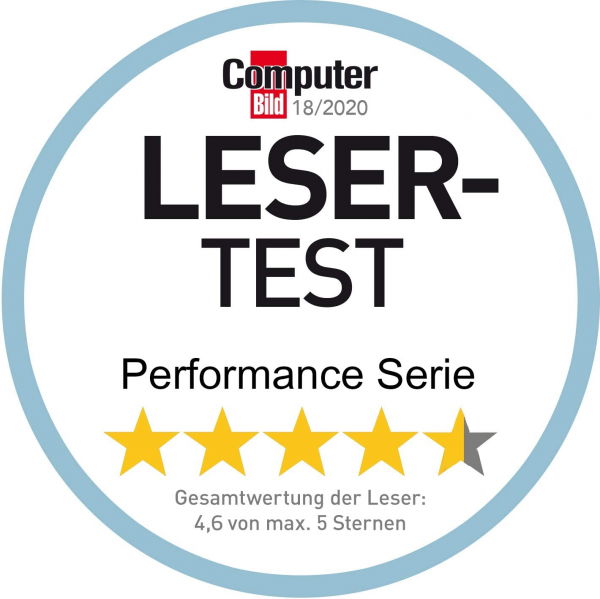
Conclusion
The Philips 58PUS7304 is a good TV with an interesting price / quality ratio and a very good alternative to the Samsung UE55RU7405. In addition to its slightly larger diagonal, it benefits from better scaling thanks to the Philips P5 processor which clearly makes the difference with HD content. Like its rotary foot, the Ambilight system also allows it to stand out from the competition. However, as always in this price range, we must ignore an HDR treatment worthy of the name.
Specifications

